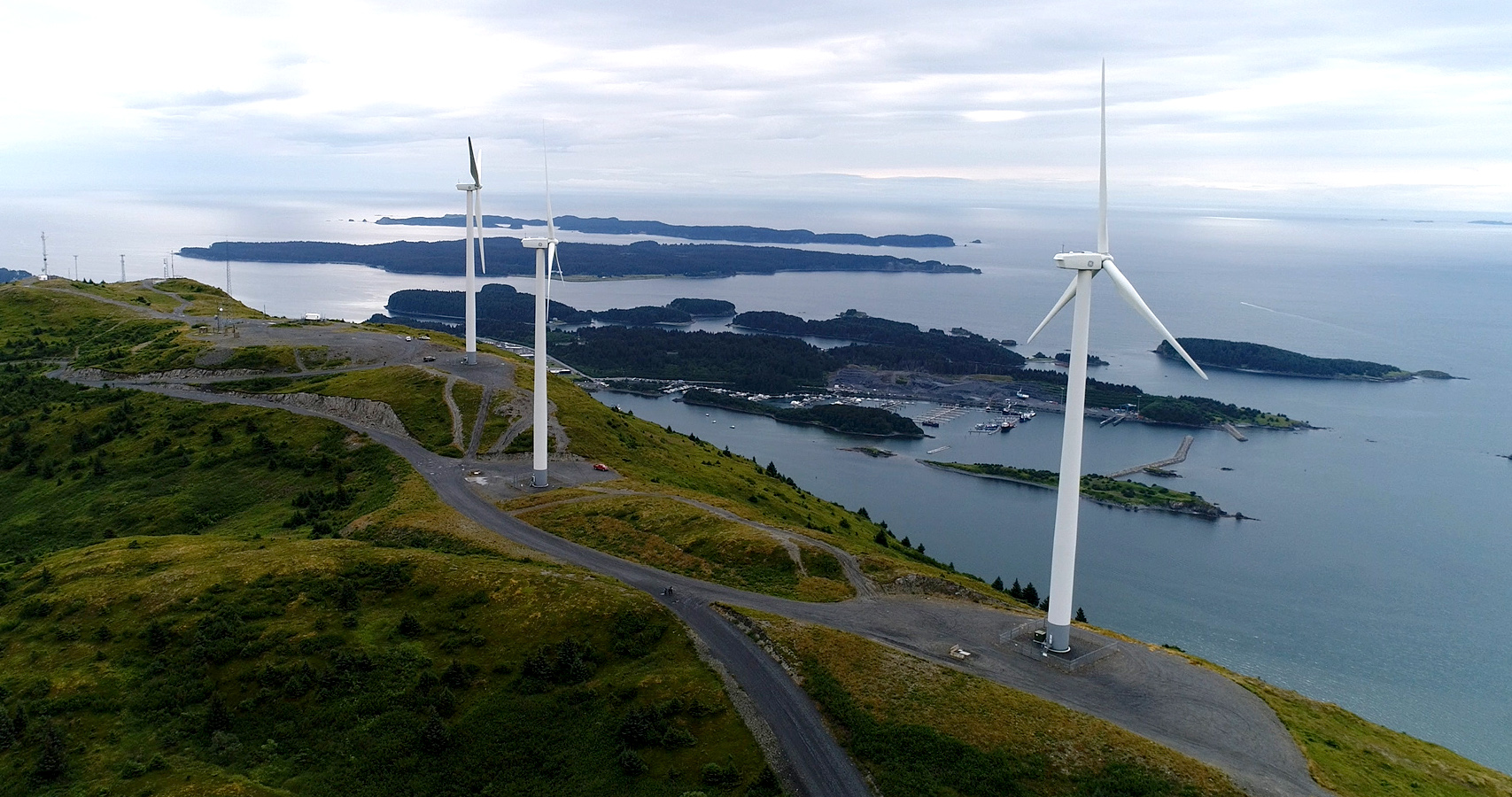Is Alaska Missing a Renewable Energy Opportunity?

An article in the December 2019 edition of Alaska Business, a monthly magazine, took an in-depth look at installed renewable energy projects around the state. The piece noted that the lack of “domestic energy policy focused on how Alaskans are going to reliably and affordably produce and consume energy” could be a missed opportunity to increase penetration of renewables.
The article noted six significant renewable energy resources in Alaska: wind, hydro, geothermal, biomass, solar, and marine hydrokinetic. Without an energy policy, many of these resources may remain stranded due to economies of scale.
“The move to replace traditional energy sources with renewably generated electricity is known as beneficial electrification, which is steadily becoming a global trend,” according to the article’s author, Isaac Stone Simonelli.
Communities such as Kodiak and, intermittently, Kotzebue have successfully incorporated renewable resources into their grids, meeting very close to 100% of their electric demand from wind, hydro and solar.
The article quoted Renewable Energy Alaska Project CEO Chris Rose as saying, “With as many renewable energy resources that Alaska has, the state should be actively working to seize the opportunity we have to keep money in local economies, create jobs and be less dependent on volatile world fossil fuel prices.”
Residents around the state are incorporating renewables on the homes through programs like Solarize Anchorage and Solarize Fairbanks, as well as a growing trend in air-source heat pumps.
“The recent Solarize campaigns in Anchorage have significantly increased overall solar photovoltaic capacity along the Railbelt,” said Erin Whitney, ACEP’s solar technologies program manager, as quoted in the article.
“At the end of 2018, there were a little over 200 net-metered solar PV systems on the Chugach and Municipal Light & Power grids in total. So far in 2019, there have been nearly 200 additional solar PV permits that have gone through the municipal permitting process in Anchorage.”
So, while Alaska lacks an energy policy, there seems to be a growing movement from communities and individuals to increase beneficial electrification and heat on their own, although a statewide energy policy would accelerate and codify these developments on much larger scales.
Kodiak Electric Association’s wind farm turbines spin atop Pillar Mountain. The farm produces up to 9 megawatts, contributing 20% of the energy needs of Kodiak. Photo by Amanda Byrd.


